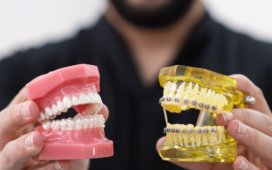Teething is a natural part of a child’s growth, but it may be difficult for everyone when your infant is in pain or uncomfortable. When your baby is teething, they may be especially cranky, and eating may be more uncomfortable, forcing them to reject things they formerly loved.
While this might be difficult, being prepared will help you handle the obstacles of teething while still feeding your child. A children’s dentist in Fullerton can give you more tips, so speak to one today.
Understanding teething
Teething normally occurs at six months, although it can begin as early as three months or as late as one year. During this procedure, your kid’s primary (baby) teeth begin to push through the gums, causing considerable discomfort. It is critical to detect teething symptoms so you can assist your infant in managing them.
Common signs of teething
- Irritability
Teething babies are frequently unhappy and cranky. They could weep a little more than normal.
- Drooling
Drooling is a typical teething symptom. To avoid skin irritation, wipe your baby’s chin with a clean towel nearby.
- Chewing and biting
Babies may chew on objects, fingers, or even their hands to ease gum irritation.
- Swollen gums
The gums may seem red, swollen, and sensitive where the new teeth are coming through.
- Changes in sleep pattern
Teething might interfere with your baby’s sleep, causing more overnight awakenings.
- Loss of appetite
Some babies may eat less when teething owing to gum irritation.
Parental coping strategies
- Teething toys
Teething toys made of safe materials give babies something to gnaw while soothing their gums. Choose age-appropriate toys and assess them regularly for wear and tear.
- Cold compress
A clean, cool towel or a chilled teething ring might assist by numbing the gums. Teething toys should not be frozen since they may become too hard for your baby’s fragile gums.
- Gentle gum massage
Wash your hands well and gently massage your baby’s gums with a clean finger. The pressure can aid in relieving pain.
- OTC pain relief
See your physician before taking any over-the-counter pain relievers made expressly for teething. If prescribed, strictly follow the dose directions.
- Distraction
Engage your baby in fun activities or give them a new, interesting toy to distract them from their pain.
- Provide extra comfort
Sometimes, all your child requires is a little more love and attention. Teething can be relieved by holding, rocking, and hugging.
- Teething cookies
Teething cookies can provide comfort while introducing your kid to new flavors and textures when he or she is ready for meals. Check that the cookies are both age-appropriate and safe.
- Maintaining oral hygiene
Even before your baby’s first tooth appears, brush their gums with a soft, wet cloth. Use a tiny, soft-bristled toothbrush as teeth begin to appear. Visit a pediatric dentist for extra assistance.


















